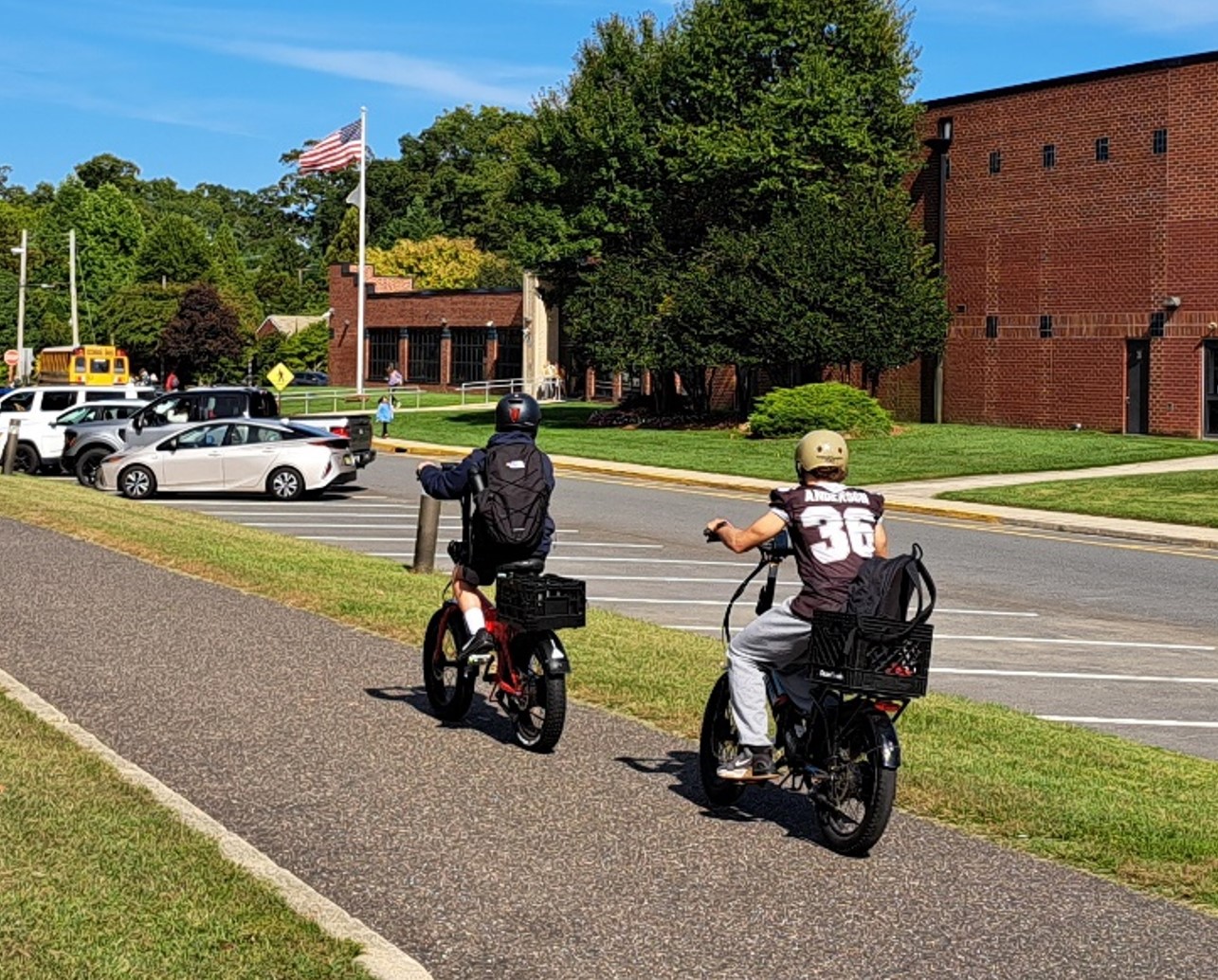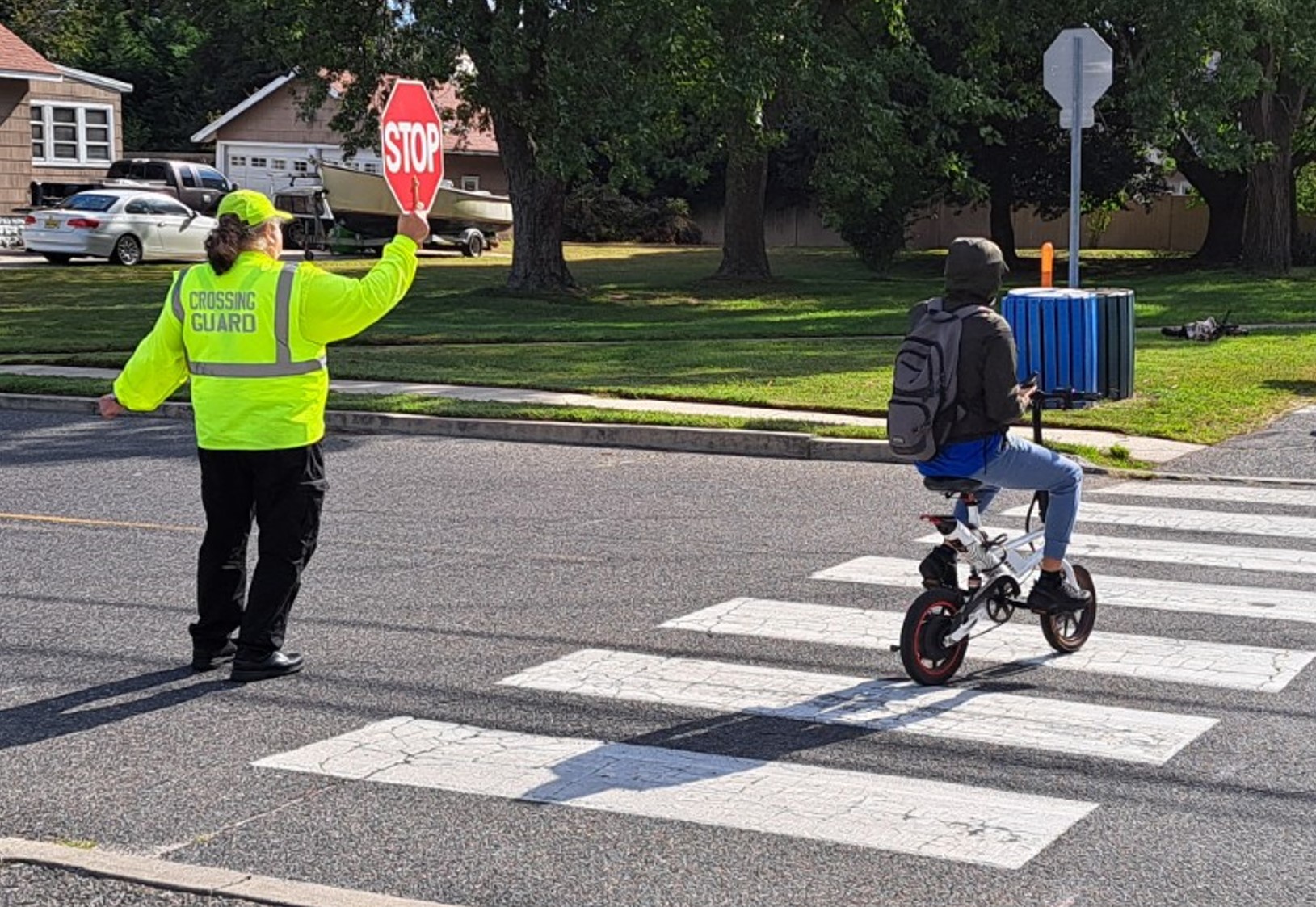As e-bikes and other micromobility devices like e-scooters and e-motorcycles become increasingly popular, young users and their parents or guardians must be equipped with the information and resources necessary to ride safely. Micromobility devices offer alternatives to driving, numerous health and environmental benefits, and a fun and exciting activity for kids. The following guidance can help parents, children, teens, and communities keep themselves and each other safe when using e-bikes and sharing the road with motor vehicles.
Guidance for Parents and Guardians
In the absence of regular school-based on-bike safety education, parents, caregivers, and community mentors are essential in teaching children and youth how to ride safely and responsibly. With this role comes responsibilities: parents should understand the components of a high-quality e-bike, be informed on relevant laws, and teach their children how to ride properly.
Safety Standards and Choosing an E-Bike
Parents should make sure they are properly informed about the qualities that make an e-bike safe and trustworthy before allowing their child to ride or buy a device. Not all e-bikes are the same, and it is important to know how to choose the right one.
It is best to choose an e-bike with a battery that is UL-certified, meaning that it is compliant with strict safety standards. An e-bike should also be purchased from a trusted vendor with trained mechanics. The device’s brakes and other parts should function well. E-bike owners will also need to follow safe practices when charging an e-bike’s battery.

More information on choosing the right device, charging e-bike batteries, and user safety can be found in the NJDOT Micromobility Guide.
E-Bike Classifications and Laws
The term “e-bike” is often used generically to include a range of devices that are classified into various vehicle types by state law. Some of these classes of e-bikes are street legal, others are only street legal with a license, and some are not street legal at all. Parents should become familiar with e-bike classifications and related New Jersey laws.
Electric Bicycles in New Jersey’s Statutes
While the term “e-bike” is used broadly by many, New Jersey State law uses the term “electric bicycle” more specifically for devices that are regulated more closely to a traditional bicycle and less like a motorcycle or other motor vehicle. The law separates electric bicycles into Class 1, Class 2, and Class 3 devices.
By law, Class 1 and Class 2 e-bikes are considered low-speed and can go up to 20 miles per hour. Class 1 and 2 e-bikes are street legal in New Jersey and are exempt from registration and licensing requirements. The NJ Motor Vehicle Commission requires that Class 1 and 2 e-bikes have a “permanently affixed label” that shows its classification, maximum assisted speed, and wattage. Helmets are required for riders under age 17.
Low-speed e-scooters are limited to 19 miles per hour. They are generally regulated the same way as Class 1 and 2 e-bikes.
Class 3 e-bikes require a license and can go up to 28 miles per hour. Riders must be at least 15 years old to ride a Class 3 e-bike and will need to obtain a motorized bicycle license or a standard driver’s license. This requirement also applies to both electric and gas-powered mopeds. Class 3 e-bikes and mopeds are only street legal if they are registered and insured. Helmets are required for all riders.
Other types of e-bikes are not legally considered “electric bicycles” according to the law. These types include electric dirt bikes, for example, which are not street legal and can only be used on private property with the owner’s permission. Like other all-terrain vehicles (ATV) in New Jersey, e-dirt bikes do not need a permit or license to operate; however, the vehicle must be registered and used for off-road use only. There are also age restrictions and safety certificate requirements for youth. Helmets are required.
The Rise of E-Motos
Electric motorcycles, often called e-motos, are not classified as electric bicycles under state law; instead, they are more closely related to motorcycles. As such, these vehicles require a full driver’s license and may even require a specialized motorcycle license endorsement. E-motos are heavier, higher-powered, and faster than other e-bikes. E-motos often travel up to 65mph, which is significantly faster than Class 1, 2, and 3 e-bikes. Some e-motos have optional speed-limiting settings, which could make them seem like they fall under the category of Class 2 e-bikes. However, a vehicle’s classification depends on the full set of a vehicle’s functional capabilities. Since these settings can be turned off, they cannot be classified as Class 2 e-bikes.
Many micromobility devices contain speed limiters. Tampering with or removing these devices is against the law, and once modified, an e-bike or e-scooter may no longer qualify as a legal vehicle. Additionally, altering speed regulators can impair performance and severely compromise rider safety. An e-bike with brakes sufficient for around 20 mph or less may not have sufficient braking capabilities for higher speeds. This is important for parents to know so that they can ensure that their children follow speed limits and do not tamper with parts of their e-bike.

Teaching Safety Early
Regardless of the legal classification of the e-bike or other micromobility device, riders are generally obligated to follow the same traffic laws as motor vehicle drivers while riding on public streets and paths. Youth need to know the rules of the road and how to protect themselves while riding. Since on-bike safety lessons are not regularly provided by schools, parents and caregivers play a crucial role in teaching their children how to ride safely. Fortunately, parents can teach and model their own knowledge of traffic laws while driving or riding with their children and young adults.
Additionally, practicing riding techniques and safety habits along a driveway or path together can be helpful in instilling safety habits and gaining crucial experience. Quizzing your kids on the rules of the road or creating a game can help them learn in a fun way. If kids do not learn the correct rules and best practices early, they may pick up bad habits or misinformation from friends. If your child lacks experience riding a regular bicycle, they should not hit the road on an e-bike until they have learned the rules of the road and have mastered some basic bicycle riding skills.
Guidance for Students
Teens and older students who are interested in using e-bikes may have more experience bicycling and more independence compared to younger children, but they need to keep safety in mind each time they ride. In addition to familiarizing themselves with the proper rules and practices on the roadway, the below are routine responsibilities that teens should remember each time they ride an e-bike.
Rider Responsibility
Riders can help protect themselves by riding predictably—in a straight line without weaving—and following other traffic laws so that drivers know what to expect from a cyclist when sharing the road. E-bike users should always ride with traffic (unless on a two-way bike lane), stop at all traffic lights and stop signs, use hand signals for turns, and obey speed limits. As mentioned before, parents play a powerful role in teaching these habits early.
Helmets
Wearing a helmet, of course, is important. In New Jersey, it is the law for anyone 17 or under to wear a helmet when riding a micromobility device. While not legally required, helmets are recommended for those over 17 years old, especially when riding e-bikes due to their higher speed capacity than traditional bikes. However, while wearing a helmet is part of the picture, it cannot solve safety issues alone. Helmets do not prevent crashes; they can only help prevent injuries if worn correctly. The best way to stay safe is to avoid a crash in the first place. Understanding and practicing the rules of the road and riding safely and predictably can help students avoid crashes and are requirements for staying safe on every ride.
Safety Checks
Before each use, teens need to make sure their device is safe to ride. Teens should always conduct a quick safety check before each use. A brief “ABC Quick Check” (Air, Brakes, Chain, Quick releases) can help ensure that each part of the bike is working properly. A short video that walks through the ABC Quick Check process can be found here.
While many teens will be able to conduct safety checks and examine their bikes themselves, younger kids or teens who are new to the process may benefit from assistance from a parent or caregiver.
Preventing Crashes
Teens are often viewed as high-risk, however, this is only part of the picture. National hospital data for e-bike injuries shows that severity increases with age; with adults aged 55+ being 3-4 times more likely to be hospitalized after a crash than those under 18. This trend reflects a complex mix of factors, including human behavior and infrastructure gaps. Limited youth safety education, inadequate road infrastructure, underreported substance use, and distracted driving all contribute to risk.
Research comparing injuries from e-bikes, e-scooters, and bicycles in the United States can be found here.
Protecting young riders requires a comprehensive approach that combines not only intentional youth bicycle education, but also infrastructure changes and community engagement that can help keep all e-bike riders, and road users, safe.

Street Design and Infrastructure
Every crash that leads to a serious injury or fatality is heartbreaking, and most are preventable. A key part of the solution is safer street design. Infrastructure that reduces vehicle speeds, eliminated conflicts, and encourages safe behavior can all help protect young riders. Enhanced bicycle facilities, such as protected bike lanes, off-road multi-use paths, and high-visibility trail crossings all provide a safer environment to ride and increase safety and attentiveness at points where e-bikes and motor vehicles interact. Learn more about options for safer street design in the NJDOT School Zone Design Guide and NJDOT Complete Streets Design Guide.
Safety Culture
In addition to implementing safe street infrastructure, communities can help protect riders by building a culture of safety. Community members can volunteer to host fun and educational events, such as a bike rodeos or bike bus programs to travel to and from school, which help inspire children develop and use safe riding habits. Schools and districts can consider integrating on-bike education into their curriculum to help children develop safe riding skills at an early age.
Driver Responsibility and Target Zero
Drivers have a large responsibility in keeping bicyclists safe. Drivers should always slow down, stay alert, and follow New Jersey’s 4-foot Safe Passing Law. Municipalities can support this legislation by aligning with the Federal Highway Administration’s Zero Deaths Vision and the State’s Target Zero Commission, which aims to eliminate all traffic deaths by 2040. Redesigning roads to eliminate fatalities and serious injuries requires a human-centered approach to street design that accounts for vulnerability and the reality that people make mistakes.
When families, municipalities, schools, and neighbors work together to create safer conditions and teach good habits, we can protect young riders, prevent future tragedies, and encourage children to participate in active transportation in a fun and exciting way.
